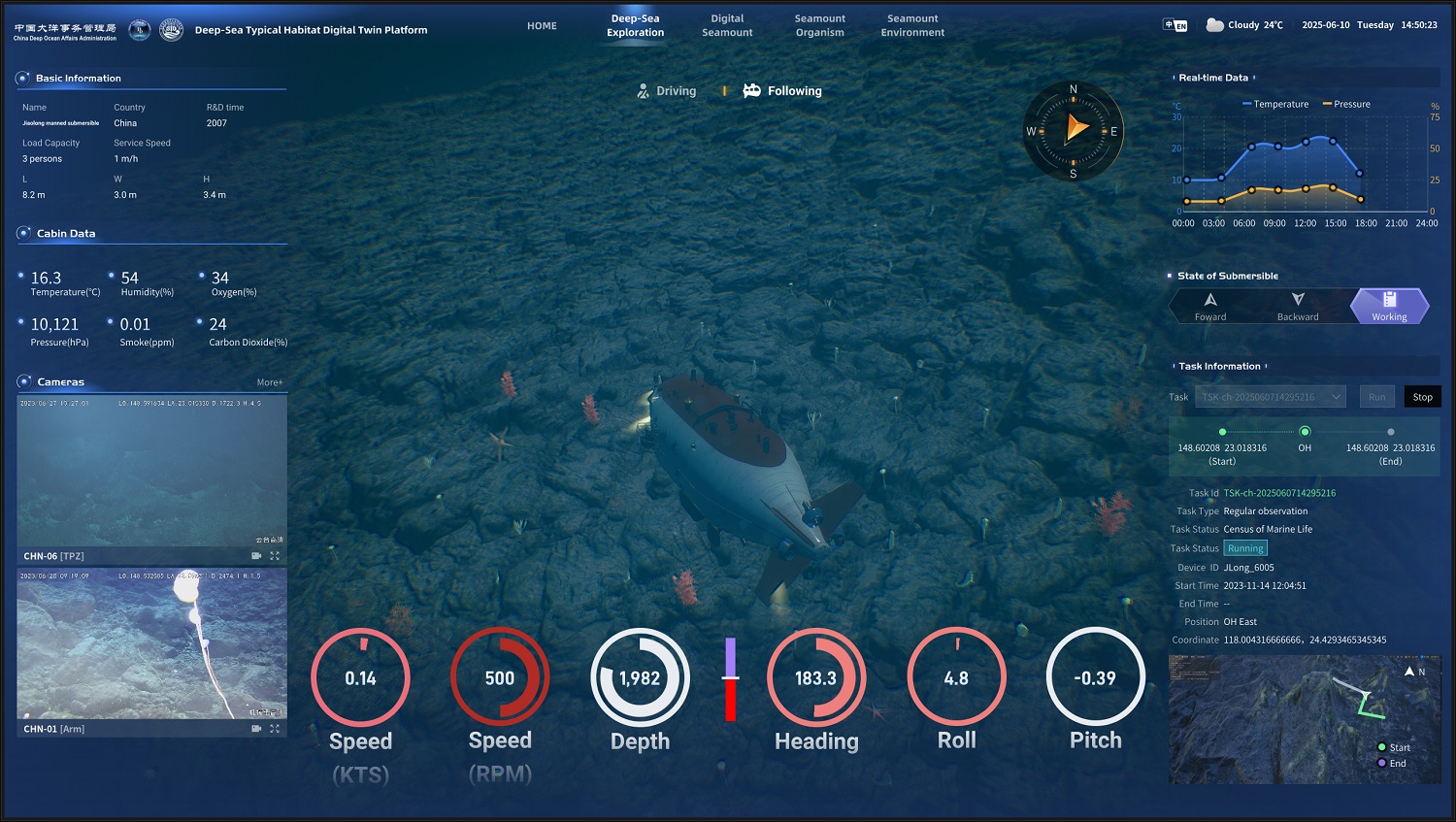News

On June 10, the “Digital Deep-sea Typical Habitats Programme” officially launched the “Digital Intelligent System for Deep-Sea Seamounts” at the 2025 UN Ocean Conference. Under the guidance of the China Ocean Mineral Resources R&D Association (COMRA), the system is co-developed by the Second Institute of Oceanography (SIO), the Zhejiang Lab, Xiamen University, the National Deep Sea Center, and other institutions. It represents a significant technological breakthrough in China’s deep-sea research and a concrete action to implement the UN Ocean Decade initiative and actively participate in global ocean governance.
The system integrates deep-sea habitat survey data collected by the “Jiaolong” manned submersible, including seamount topography, geological structures, hydrological parameters and video images, alongside long-term investigations of water masses, sediments and biological information around seamounts. By combining these datasets with satellite remote sensing data of ocean surface conditions and numerical modeling techniques, a digital platform is constructed. Intelligent recognition modules for seamount biology and geology are integrated, presenting complex deep-sea environments in a user-friendly, immersive manner. This allows researchers to characterize the evolutionary patterns and trends of seamount ecosystems and predict their responses to climate change.
Based on long-term multi-source observational data, the habitat initiative team of the SIO established a high-resolution (100-meter grid) circulation numerical model for the Northwest Pacific region, accurately simulating circulation characteristics influenced by seamount topography. This model served as the foundation for constructing digital scenarios and designing interactive scenarios.
As China’s first digital public science and technology product in the deep-sea domain, the system aims to support deep-sea scientific research and international governance through digitalization and AI technologies and provide solutions for deep-sea conservation and sustainable utilization. In the future, the system can be expanded to other typical deep-sea habitats, such as submarine plains and hydrothermal vents, becoming a core infrastructure for global ocean governance and blue economy development.



